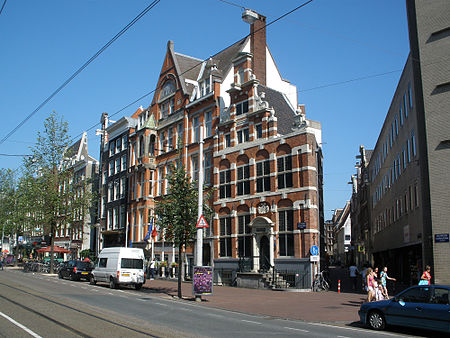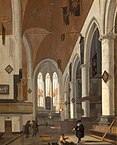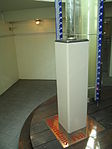Makelaers Comptoir
1634 establishments in the Dutch RepublicBuildings and structures completed in 1634Guildhalls in the NetherlandsRijksmonuments in Amsterdam

The Makelaers Comptoir or (in modern Dutch spelling) Makelaarskantoor, the "brokers' office", is a 17th-century guildhall in Amsterdam, at the corner of Nieuwezijds Voorburgwal and the alley Nieuwe Nieuwstraat. It is one of the few remaining guildhalls in Amsterdam. The building has held rijksmonument status since 1970. It is not open to the public, but is rented out occasionally for small events such as meetings, lunches and dinners. In 2009 the building was opened to the public during Open Monumentdag.
Excerpt from the Wikipedia article Makelaers Comptoir (License: CC BY-SA 3.0, Authors, Images).Makelaers Comptoir
Nieuwe Nieuwstraat, Amsterdam Centrum
Geographical coordinates (GPS) Address Nearby Places Show on map
Geographical coordinates (GPS)
| Latitude | Longitude |
|---|---|
| N 52.375277777778 ° | E 4.8925 ° |
Address
Casa del Toro
Nieuwe Nieuwstraat
1012 NH Amsterdam, Centrum
North Holland, Netherlands
Open on Google Maps








